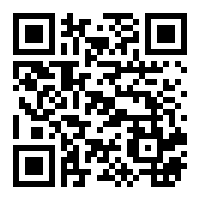William Blake (1757 - 1827) was an English poet, artist, engraver and visionary. Some of his shorter poems are among the best known in Britain - for example 'Jerusalem' ('And did those feet, in ancient times, walk upon England's mountains green...') or 'The Tyger' ('Tyger, tyger, burning bright, in the forests of the night')

His personal behaviour was often strange. Wordsworth said 'There was no doubt that this poor man was mad'. He claimed to have visions and to talk to angels. His longer poems often appear confusing, even irrational. He was not a businessman, sold few of his works in his lifetime, and was not 'discovered' until long after his death.
His life was dedicated to explaining his own view of the world - that the violence and poverty he saw around him were due to man's fall from his original state into a 'vegetative' life of 'mind-forged manacles'. Through his own invented mythology he explains the mechanisms behind this Fall, and how mankind can recover its rightful place. Had he been more widely known, he would probably have been imprisoned for sedition, since his sympathies were with the French revolutionaries rather than the British establishment, and he lived in times when the government and its spies pursued seditionists. He was associated with some of them, but never took an active role in politics, preferring to try to change mankind rather than to replace one dubious system with another. He was very much a London poet (apart from three years in Felpham) and his work is grounded with precise geographical references to London and England.
Some of his writings have a tinge of paranoia. Whilst mankind is struggling to emerge from the vegetative state, Satan is trying to stop him. Although the infinite can be found even in the very small:
Yet this must be done with circumspection:
Lambeth, where
has changed. Where Blake could look out of his bedroom window and see fields leading down to the Thames, there is now a sort of light-industrial wasteland. Of recent years Blake's association with the place has been partly reclaimed by memorials, such as a series of mosaics showing his works, and a blue plaque.

Blakes reference to the grain of sand which was 'translucent and has many angles' yet which let you 'see the world' made me think of the modern QR code, which is literally 'full of many angles'. You CAN see the world in a grain of sand (or pretty nearly so) and you CAN hold infinity, in the form of the internet, in the palm of your hand. It just took 200 years for Blake's 'mad' vision to come true.
I therefore made my own 'grains of sand' in the form of stickers with a QR code which links to pages on my own website, and placed these in Lambeth.
It works simply. You need a mobile phone with an app that can read barcodes, including QR codes. You read the code and this gives you the URL of a web page on my site. If you follow this, you see an image by Blake with some embellishments.


I thought of using Augmented Reality technology, which offers a much nicer interface and would allow much more variety: however, this would require viewers to download a specific AR app to their mobiles first. Using only QR codes means that any phone can see the links, possibly by chance. I can insert physical links into any place, and although these may not be found very often, they do provide a tiny 'grain of sand' which steps from a physical location to a huge mental space.
I used .css animation to make the links. Although confusing to write, it is more immediate than some alternatives, eg asking the user to display a video.